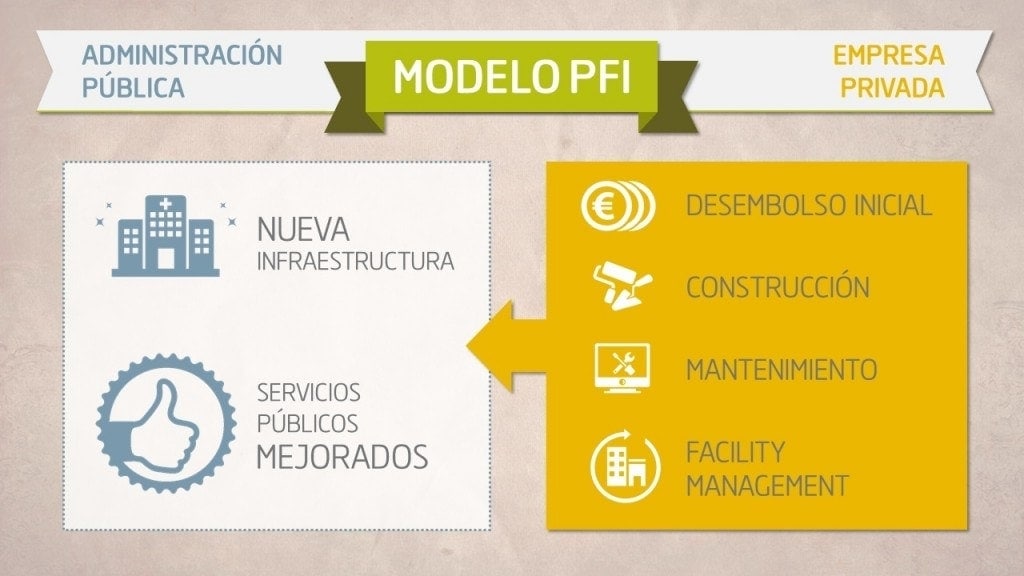
Have you ever stopped to think how many public services you use on a regular basis? Every day we carry out many activities without even realising that we are using public infrastructures: we travel to work on a public road, we take our children to a public school, we practice sports in a municipal facility and we even brush our teeth with clean water thanks to the local water treatment services.
In order for us to be able to enjoy all these facilities as citizens, the public administration must tackle numerous challenges. And amongst the most important of these is the availability and condition of the infrastructures required for providing such services.
Good public services very much depend on the quality of the facilities in which they are provided. So the better the condition of such facilities, the greater the chance that the services offered in them will also be of a high quality.
How can the public administration afford state-of-the-art infrastructures?
Over the last few years, governments have had to severely adjust their budgets, especially for public works. However, there are certain management models which allow high quality services within innovative infrastructures to continue being offered even within this new budget context. And PFI is one of such models.
What is the Private Finance Initiative model?
The PFI, or Private Finance Initiative, model is a concessionary system of private financing for the building of public infrastructures which allows the public administration to take on large investment projects through public-private partnerships (PPPs), without the need for meeting large up-front costs. In exchange for financial payments for the duration of the contract, generally in the form of a fixed percentage subject to meeting a series of quality indicators, the concessionary company makes the initial investment and is responsible for infrastructure maintenance and any new capital investments as may be required during the life of the contract.
In this way, the PFI model provides the public administration with infrastructures which are at the cutting edge of efficiency and technology, while maintaining public budget stability. And it can therefore provide better services to its citizens.
| ADMINISTRACIÓN PÚBLICA | PUBLIC ADMINISTRATION |
| MODELO PFI | PFI MODEL |
| EMPRESA PRIVADA | PRIVATE ENTERPRISE |
| NUEVA INFRAESTRUCTURA | NEW INFRASTRUCTURE |
| SERVICIOS PÚBLICOS MEJORADOS | IMPROVED PUBLIC SERVICES |
| DESEMBOLSO INICIAL | INITIAL INVESTMENT |
| CONSTRUCCIÓN | CONSTRUCTION |
| MANTENIMIENTO | MAINTENANCE |
| FACILITY MANAGEMENT | FACILITY MANAGEMENT |
What are the benefits of the PFI model?
In addition to construction and renewal of infrastructures, the PFI model usually includes the services of facility management (FM) required for operation of the infrastructure throughout the life of the contract, while the public administration provides the public services for which the infrastructure has been built (health services, education, public transport, etc.). Contracts usually include maintenance, cleaning, security, road safety or gardening services. Depending on the type of infrastructure, more specific services may also be covered, such as catering, laundry, logistics, sterilisation or maintenance of electromedical equipment at hospitals.
Compared to the traditional model, where building works are contracted directly by the public administration through a construction contract and Facility Management services through a services contract, the PFI model brings the following advantages:
- It enables large investment projects to be taken on without the need for a large initial investment.
- It transfers risk to the provider, both in relation to the actual building of the infrastructure and for service operations.
- It improves budget compliance.
- It achieves stability in operating costs throughout the life of the contract.
- It ensures quality standards are met, given that payments are subject to compliance with objective indicators of quality of performance.
- It ensures adequate conservation and renewal of the infrastructure throughout the life of the contract, irrespective of the budget available in each tax year.
- Creates volume synergies through integration of services.
A model that works: Marqués de Valdecilla University Hospital
Smart Hospital Cantabria, a consortium made up by Ferrovial Services and SIEC, was awarded the contract to finish works for extension and improvement of the Marqués de Valdecilla University Hospital in Santander, and provide both basic and highly technical equipment, using the PFI model. The contract also included provision of facility management services for the hospital complex.
The main characteristic of the PFI model for the Valdecilla Hospital is that it is applied on an already existing hospital infrastructure. The investment required was limited to the third phase of the hospital extension project, including some changes to the previously built phases. However, the provision of services covers the whole of the infrastructure, both the existing hospital areas and the new-build ones. This means that the proportion between the cost of the services to be provided and the investment to be made is significantly larger than in other PFI models: i.e. there is an extensive services portfolio for a relatively small investment.
Moreover, the Valdecilla Hospital contract includes the provision of services which are not commonly found in PFI models, such as general logistics and clinical histories. Of special note here also is the IT system, with the PFI model enabling a complete renewal of the hospital’s IT infrastructure.
Through this public-private partnership, the local administration in Cantabria was able to complete in 18 months a project which had been ongoing for 15 years. The contract has been implemented within a fixed budget, with no overspend, and no risk in relation to maintenance and operational costs for the next 20 years. Integrated services management has also brought synergies and savings through volume, to the benefit of the public administration. And linking payments to stringent compliance with numerous quality indicators measuring the quality of service provision guarantees excellence in provision throughout the life of the contract.
About the Private Finance Initiative model
The PFI model originated in Britain and was first used in the UK in 1992. It has been widely used in Spain since 1997 for the building of schools, prisons, hospitals and other infrastructures. There are also numerous PFI examples in Spain for the financing of health or administration infrastructures. The PFI model complies with Spanish legislation on public contracting using different contract models, mainly through public works concessionary contracts and occasionally through public private partnerships.







There are no comments yet